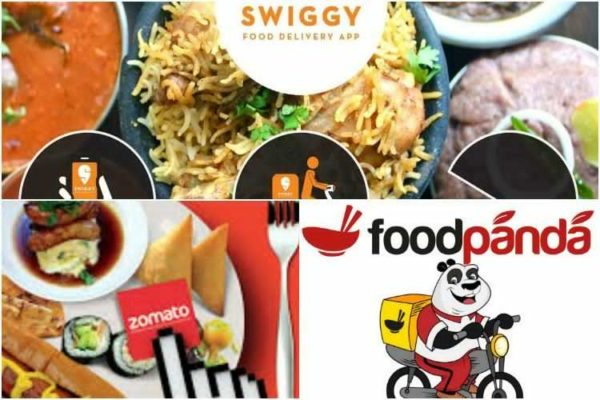From ready-to-cook and ready-to-eat to ‘let us cook and you eat’ – the latest mode of ordering food has taken the world by storm. The art of cooking was only getting easier until we removed the human factor out of it completely. What happens when you tap and order food? You get a ready-made platter of creamy goodness, laced in greasy love and fatty convenience. Care to take a bite?
The world today is driven by technology. Everything you need is a touch away. The dilemma of the reliance on technology continues to bother many. When it comes to food, we are being spoon-fed by applications that help us tap and order.
This easy mode, however, has detrimental effects on health. As per a study conducted in 2012 in a North Carolina restaurant serving pizza, ordering food through digital media caused a 6% hike in calories against ordering at the diner. The vicious cycle continues to loop us, and so caught are we in a web spun by these apps, that there is no way out. In fact, 69% of diners receive their orders through mobile devices.
The effects on health
While food apps may claim to showcase some healthy food choices in their menu, this culinary revolution has nurtured a sedentary, unhealthy lifestyle, thereby destroying the choices of healthy eating and encouraging complex food ordering.
Did you know that 40% of Domino’s orders in the US come from digital media? Convenience is the key factor influencing the trend. Whether you have had a tiring day or just want to chill on your couch, all you have to do is tap and order to call for the beautifully guised butter-laced piece of meat immersed in the quicksand of oil. It does turn out rather expensive, now and in the future. Additional supportive apps like Apple Pay, Samsung Pay, Easy pay are trends that are fuelling the pattern of easy spending.
UK-based Deliveroo famous for food ordering and delivery, seems to be expanding exponentially, at about 25% per month. It was founded in 2013 and since then spread to seventy odd countries. The food delivery market is worth 83 billion Euros, with the estimated annual growth being 3.5%. There are many debatable points of this culinary revolution. No doubt these apps provide a seamless experience, but they also aid unhealthy eating habits.
Food apps trending
Some of the famous mobile apps for ordering food in India include Zomato, Foodpanda, Swiggy, FoodMingo, TastyKhana and JustEat. Food delivery is becoming such a trend that delivery-only kitchens are springing up in every corner.
What fuels digital food ordering? Is it just convenience, spending-power or sheer laziness? Not only has it increased the reliance on outside food, it has also drastically changed the way people eat. Food ordering is not just confined to burgers, pizzas and rolls but Indian thalis, parathas, tikka rolls as well. Food orders through mobiles are 30% higher than in-house orders. Even restaurants that have food apps are believed to push sales by 18%. The difference lies in the fact that you do not have control over the ingredients used, the amount of fat used in cooking or oil topped in the dressing. The claims to healthy salads remain mere claims till the cooking ladle is in your hands and you know exactly what you are putting into the bowl.
The recent demonetization in India has really powered these applications, giving them a new spin on food delivery. Ordering food by tapping your screen literally accounts to no energy expended and you end up ordering more food than you can consume. Demonetization has led to a cash crunch. Owing to this crisis, people have started depending on digital food applications. Delivering food in some cities has risen by 50%. Many restaurants offer healthy snacking and dining options, however, how many of these are actually available in smaller towns and suburbs, is the real question. You automatically end up choosing food that looks good in the pictures and is fatty in nature.
What does the future hold? The soon to be launched Under Eats is bound to take the country by storm. It aims at spanning through different cities to deliver food to as many people as they can. Placing orders via smartphones is believed to account to 20% of restaurant sales by 2020, as per Business Insider Intelligence. By then, mobile ordering would have reached a 38 billion USD mark.
Just ask yourself before you tap – are you ordering smart, how much do you need and why do you order so frequently?




Leave a reply